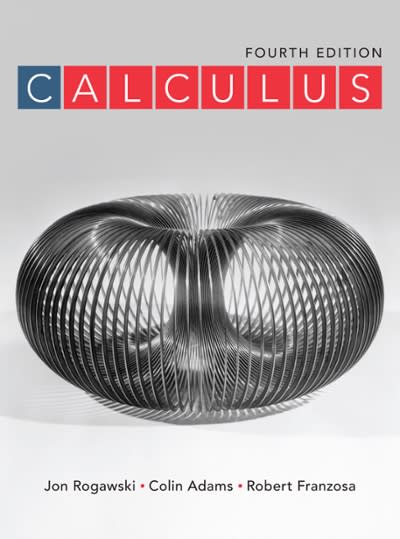Let (Phi(x, y)=(x, y, x y)). (a) Calculate (mathbf{T}_{x}, mathbf{T}_{y}), and (mathbf{N}(x, y)). (b) Let (S) be
Question:
Let \(\Phi(x, y)=(x, y, x y)\).
(a) Calculate \(\mathbf{T}_{x}, \mathbf{T}_{y}\), and \(\mathbf{N}(x, y)\).
(b) Let \(S\) be the part of the surface with parameter domain \(\mathcal{D}=\left\{(x, y): x^{2}+y^{2} \leq 1, x \geq 0, y \geq 0ight\}\). Verify the following formula and evaluate using polar coordinates:
\[
\iint_{S} 1 d S=\iint_{\mathcal{D}} \sqrt{1+x^{2}+y^{2}} d x d y
\]
(c) Verify the following formula and evaluate:
\[
\iint_{S} z d S=\int_{0}^{\pi / 2} \int_{0}^{1}(\sin \theta \cos \theta) r^{3} \sqrt{1+r^{2}} d r d \theta
\]
Fantastic news! We've Found the answer you've been seeking!
Step by Step Answer:
Related Book For 

Question Posted:





